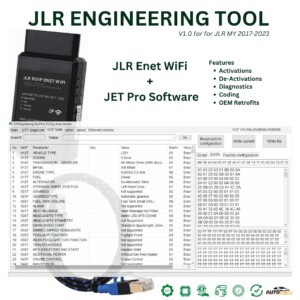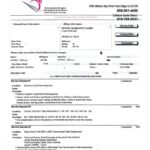For owners of the classic 2001 Range Rover P38, understanding and maintaining your vehicle’s onboard diagnostic system is crucial. The OBD2 (On-Board Diagnostics II) system is your car’s self-monitoring brain, tracking performance and flagging potential issues. Knowing how to interact with this system, including resetting your OBD2 scanner, is a valuable skill for any P38 Range Rover enthusiast. This guide will walk you through why and how to reset your OBD2 scanner on your 2001 Range Rover P38, ensuring your vehicle runs smoothly and efficiently.
Understanding the OBD2 System in Your 2001 Range Rover P38
The OBD2 system became standard in vehicles sold in the US starting in 1996, and the 2001 Range Rover P38 is equipped with this technology. It monitors various engine and emissions-related components, and when it detects a problem, it illuminates the “Check Engine Light” (CEL) or “Malfunction Indicator Lamp” (MIL) on your dashboard. Along with the warning light, the system stores diagnostic trouble codes (DTCs) which pinpoint the area of the issue. An OBD2 scanner is a tool that allows you to read these codes, understand the problem, and in many cases, reset the system after repairs.
Why Reset Your OBD2 Scanner on a Range Rover P38?
There are several reasons why you might need to reset your OBD2 scanner or the OBD2 system in your 2001 Range Rover P38:
- After Repairs: Once you’ve diagnosed and repaired an issue that triggered the CEL, you’ll need to reset the system to turn off the light and clear the stored DTCs. This confirms that the problem is resolved and allows you to monitor if the issue recurs.
- Clearing False Codes: Sometimes, the OBD2 system can throw codes due to sensor glitches or temporary malfunctions. Resetting the system can clear these false alarms, but it’s crucial to ensure the code doesn’t reappear, indicating a genuine problem.
- Emissions Testing: In some regions, your vehicle needs to pass an emissions test. Resetting the OBD2 system shortly before a test might be necessary after certain repairs, but be aware that recently cleared codes might make your vehicle fail the “readiness monitors” portion of the test if not enough drive cycles have been completed.
- Troubleshooting: Resetting the system can be part of the diagnostic process. For example, if you’re unsure if a problem is still present, clearing the codes and seeing if they return can provide valuable information.
How to Reset Your 2001 Range Rover P38 OBD2 Scanner
Resetting the OBD2 system on your 2001 Range Rover P38 is generally a straightforward process, primarily done using an OBD2 scanner. Here are the common methods:
-
Using an OBD2 Scanner:
- Connect the Scanner: Locate the OBD2 port in your Range Rover P38. It’s typically located under the dashboard on the driver’s side. Plug your OBD2 scanner into this port.
- Turn Ignition On: Turn your ignition key to the “ON” position, but do not start the engine. This provides power to the OBD2 system and scanner.
- Read Codes (Optional but Recommended): Before resetting, it’s good practice to read the stored DTCs. This gives you a record of the issues your vehicle has encountered. Most scanners have a “Read Codes” or similar function.
- Erase Codes/Reset: Navigate your scanner’s menu to find the “Erase Codes,” “Clear Codes,” or “Reset” function. Select this option and follow the scanner’s prompts. This command tells the vehicle’s computer to clear the stored DTCs and reset the OBD2 system.
- Verify Reset: After the process is complete, the CEL should turn off (if it was illuminated due to the codes you cleared). You can also use the scanner to re-read codes to confirm that no DTCs are currently stored.
 OBD2 Scanner Connected to Car
OBD2 Scanner Connected to Car -
Battery Disconnect Method (Less Reliable for OBD2 Reset):
- Locate Battery: Identify the battery in your Range Rover P38, usually under the hood.
- Disconnect Negative Terminal: Using a wrench, carefully disconnect the negative battery cable.
- Wait: Let the vehicle sit for about 15-20 minutes. This allows the vehicle’s computer to fully discharge and potentially reset.
- Reconnect Battery: Reconnect the negative battery cable securely.
- Check for Reset: Start your vehicle and see if the CEL is off.
Important Note: While the battery disconnect method might sometimes clear basic codes, it’s not a reliable or recommended method for resetting the OBD2 system compared to using a dedicated scanner. It can also reset other vehicle systems and may not effectively clear all DTCs related to emissions. Furthermore, modern vehicles often require specific reset procedures that battery disconnection won’t achieve.
Choosing the Right OBD2 Scanner for Your 2001 Range Rover P38
For a 2001 Range Rover P38, a basic OBD2 scanner will often suffice for reading and resetting codes. However, depending on your needs and how deeply you want to delve into your vehicle’s diagnostics, you might consider more advanced options.
-
Basic OBD2 Scanners: These are inexpensive and readily available. They typically read and clear generic OBD2 codes and are suitable for simple CEL resets.
-
Enhanced OBD2 Scanners: These scanners offer more features, such as reading manufacturer-specific codes (beyond the generic OBD2 codes), live data streaming, and sometimes advanced functions like ABS or airbag system diagnostics.
-
Professional Diagnostic Tools: For in-depth diagnostics and advanced functions like module programming, coding, and adaptations, professional-grade diagnostic tools are necessary. These tools, like the JLR Engineering Tool JET-Pro and CCF-PRO, offer comprehensive coverage for Land Rover and Range Rover vehicles, including older models like the P38.
 JLR JET-Pro and CCF-PRO Diagnostic Tools
JLR JET-Pro and CCF-PRO Diagnostic Tools
The JLR Engineering Tool JET-Pro and CCF-PRO: Advanced Diagnostic Solutions
While a basic OBD2 scanner can handle simple resets, tools like the JLR Engineering Tool JET-Pro and CCF-PRO offer a significant upgrade in diagnostic capability, particularly for Land Rover and Range Rover vehicles. These tools provide:
- Comprehensive Diagnostics: Read and clear generic and manufacturer-specific codes across all vehicle systems, not just engine and emissions.
- Advanced Functions: Perform coding, programming, adaptations, and module resets that go far beyond basic OBD2 scanners.
- Live Data and Graphing: Monitor real-time sensor data to pinpoint intermittent issues and understand vehicle performance in detail.
- Vehicle-Specific Coverage: Designed specifically for Jaguar Land Rover vehicles, ensuring deep diagnostic access and accurate results, including older models within their supported range.
For owners of a 2001 Range Rover P38 who want more than just basic OBD2 resets, investing in a more capable diagnostic tool can be highly beneficial for comprehensive vehicle maintenance and troubleshooting.
Conclusion
Resetting your 2001 Range Rover P38 OBD2 scanner is a routine maintenance task that empowers you to manage your vehicle’s health effectively. Whether you choose a basic OBD2 scanner for simple code clearing or opt for advanced tools like the JLR Engineering Tool JET-Pro and CCF-PRO for deeper diagnostics, understanding how to interact with your OBD2 system is essential. By regularly monitoring and addressing diagnostic codes, you can ensure your classic Range Rover P38 continues to provide reliable performance for years to come. Consider exploring advanced diagnostic tools for a more in-depth approach to maintaining your cherished Land Rover.
